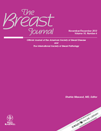Malignancy Rates of Non-masslike Enhancement on Breast Magnetic Resonance Imaging Using American College of Radiology Breast Imaging Reporting and Data System Descriptors
Abstract
Abstract: The purpose of this study was to evaluate the malignancy rates for non-masslike enhancement on breast magnetic resonance imaging by American College of Radiology Breast Imaging Reporting and Data System descriptors. We retrospectively reviewed breast magnetic resonance imaging reports with non-masslike enhancement performed at Mayo Clinic Florida from April 1, 2003, through March 14, 2007. Each descriptor of non-masslike enhancement as per the American College of Radiology Breast Imaging Reporting and Data System magnetic resonance lexicon was correlated with percutaneous biopsy pathologic results and/or surgical pathologic results and follow-up imaging. Positive predictive values were obtained for each Breast Imaging Reporting and Data System descriptor. We identified 578 incidents of non-masslike enhancement in 378 patients. Of 343 non-masslike enhancements that could be correlated with pathology results, 141 (41.1%) were malignant. Of the malignant lesions, 53% were found to be ductal carcinoma in situ at percutaneous biopsy. Clumped pattern of enhancement and segmental distribution of non-masslike enhancement had the highest sensitivities of 40.5% and 23.5%, respectively. Asymmetric pattern and segmental distribution had the highest positive predictive values of 75.0% and 57.4%, respectively. We concluded that the moderate positive predictive values make it difficult to establish guidelines for management of non-masslike enhancement and reveal the current limitations of breast magnetic resonance imaging.




